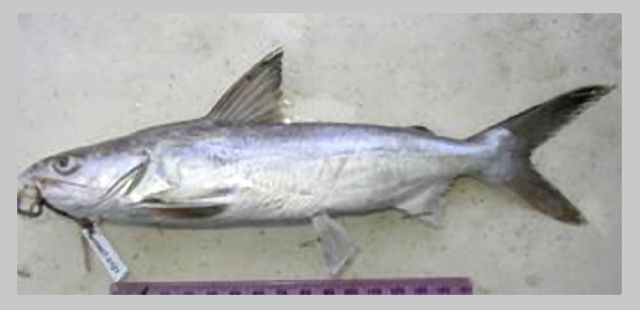| Ariidae (Sea catfishes), subfamily: Ariinae |
| 45 cm SL (male/unsexed) |
|
benthopelagic; freshwater; brackish |
| Africa: Pangani River in Tanzania and estuaries of Madagascar (Ref. 3876). |
|
Anal spines: 0-0; Anal soft rays: 19-21. Description: Dorsal profile of head with a steep slope to first dorsal-fin base (Ref. 3290). Mouth with 3 pairs of barbels, the maxillary pair extending to slightly beyond pectoral-fin base; head shield not very granulated; supraoccipital process longer than broad at base, its hind end nearly straight; median longitudinal groove on head shallow, extending to just behind posterior margin of orbit anteriorly, not reaching supraoccipital process posteriorly; premaxillary band of teeth in upper jaw 5 times as long as broad, mandibulary band of teeth in lower jaw deeply curved and medially interrupted; palate teeth, on roof of mouth, granular, in a single triangular patch on each side, diverging behind, with a conical projection at the anterior end, well separated (Ref. 3290). First dorsal and pectoral fins each with a strong spine; total anal fin rays 19-21 (Ref. 3290). Colouration: Back brownish, sides silvery, belly white (Ref. 3290). |
| Arius africanus is a coastal species, mostly found in freshwater (Ref. 52331), but probably it inhabits also estuaries (Ref. 3290, 5213). It feeds mainly on invertebrates and small fishes (Ref. 3290). |
|
Data deficient (DD); Date assessed: 08 February 2017 Ref. (130435)
|
| traumatogenic |
Source and more info: www.fishbase.org. For personal, classroom, and other internal use only. Not for publication.

